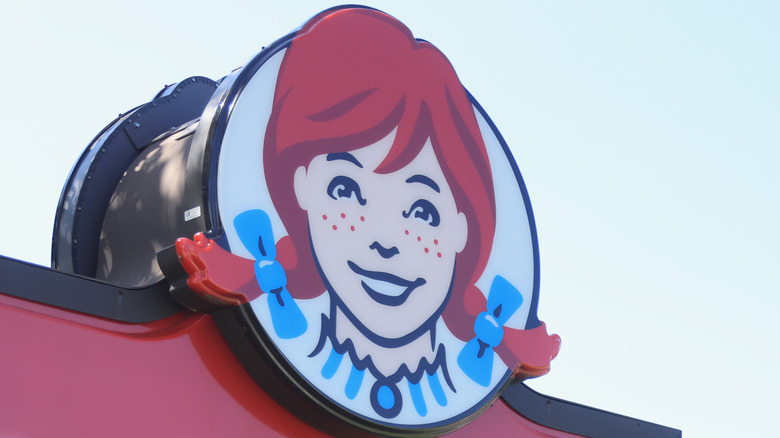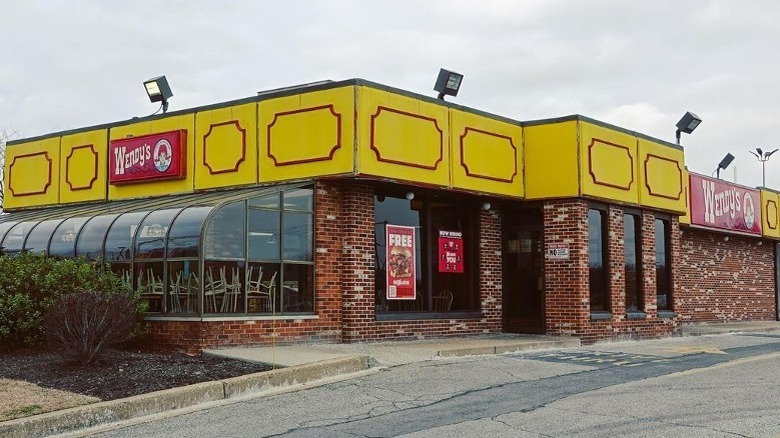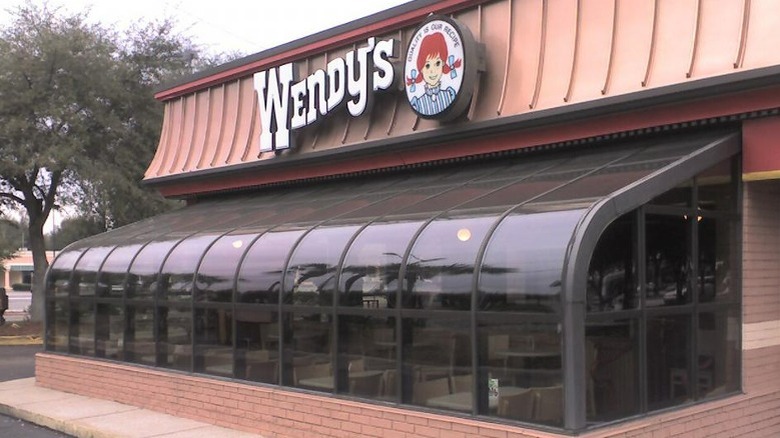We're Still Mourning The Elegant Wendy's Sunrooms
Have you ever noticed a Wendy's that looked a bit different than the rest? While all Wendy's locations don't look exactly the same, the ones we're talking about have a very noticeable, somewhat rare feature that you've probably never seen before — not on a fast-food restaurant at least. These particular Wendy's have sunrooms — those big, airy indoor rooms with wall-to-roof windows that give customers an unspoiled view of the outside world.
Although Wendy's today shares as many similarities with competing restaurants like McDonald's and Burger King as it does differences, it actually hold an impressive history of innovation in its restaurants. A 1986 report by The Washington Post points to Wendy's being the first nationwide fast-food chain to include a salad bar, starting in 1979 (according to a Wendy's spokesperson) Wendy's also credits itself with introducing the modern drive-thru window to the world in 1970 — although Wendy's didn't invent the drive-thru itself, considering other restaurants have been credited with pioneering the drive-thru model.
Wendy's no doubt wants to show off to the world just how innovative fast-food can be, whether it's through never-frozen beef, salad bars, or drive-thru windows. It would seem that this spirit of innovation also influenced certain architectural choices in many Wendy's locations. What exactly was the purpose of the sunroom, and why do we not see it in use today?
Wendy's added sunrooms to look more upscale
If you ask the question of what constitutes a classy restaurant, chances are fast-food places aren't making the list. The public views fast-food restaurants as cheap and easy places to grab food when they don't feel like cooking. While that business model helped turn fledgling hamburger joints into the economic giants they are today, there was a time where fast-food wanted to shake the image of being a "grease pit" and make itself look a little more presentable to a mature, sophisticated public.
Wendy's idea on how to give its restaurants an air of elegance was sunrooms or solariums. Denny Lynch, the then-vice president of communications at Wendy's explained the concept to The New York Times in 1985, noting that the solariums offered two main advantages. Not only would the solarium fill the dining area with warm, natural light and give it a welcoming and comforting atmosphere, but it would also showcase the dining room to the world outside. Lynch believed that customers driving by would see just how many people would be dining at Wendy's, and thus feel more interested to try it for themselves.
To compliment the 700 sunrooms that would be installed at Wendy's locations across the United States, decorations like hanging plants and wood paneling would be also be added to further give Wendy's a clean and upscale look — one that would hopefully entice sophisticated burger connoisseurs to its doorstep.
Sunrooms eventually fell out of fashion
Times change and so do people's tastes and interests. What may have been popular decades ago may be seen as tacky and cheesy by the standards of today. This is the unfortunate scenario that befell Wendy's sunrooms. In a time when people wanted to focus more on convenience and service instead of sitting down in a fast-food dining room, the idea of luring people in with sunrooms and hanging ferns quickly became outdated.
Perhaps another reason as to why the sunroom became obsolete may be connected back to how the buildings were heated and cooled. While the sunrooms may have provided free heat during the summer months, the lack of sunlight during the winter made them harder to heat and made the restaurant much colder. Ironically, something that intended to use the natural warmth of the sun to draw in customers was forcing staff to turn up the heat. Sunrooms may have been popular in the summer, but they became cold, empty spaces during the winter.
While some sunrooms eventually were torn down when restaurants were remodeled to fit more modern demands, some still remain as part of Wendy's across the country. What was once the symbol of fast-food trying to reach for new horizons now remains a curious architectural oddity in the world of hamburgers and mascots.


